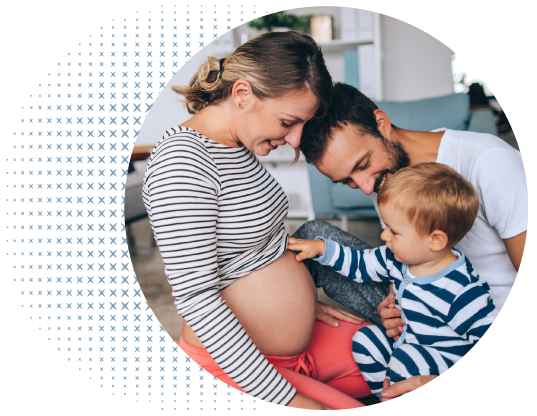- Section 1
-
Lesson 1
-
Last Lesson Experience

Panorama
Course 4 of 5 in Provider Solutions
Early prenatal screening: accurate insights for fetal health
This Panorama course offers an in-depth look at Natera’s Panorama test—what it is, how it works, when to use it, how to interpret its results, and how to communicate effectively with patients. Panorama is a noninvasive prenatal screening (NIPT) test that uses a simple blood draw from the pregnant person to screen for common chromosomal conditions affecting a baby’s health. It can be performed as early as nine weeks gestation and delivers most results within 5-7 calendar days after the sample arrives. Natera+2Natera+2
In this course you will learn the background science: how cell-free DNA (cfDNA) from the placenta circulates in the mother’s blood, how single-nucleotide polymorphisms (SNPs) technology is used to differentiate fetal DNA from maternal DNA, and why Panorama’s SNP-based approach helps improve accuracy and account for population and ethnic variation. Natera+1
You’ll also get a detailed understanding of what Panorama screens for: trisomy 21 (Down syndrome), trisomy 18, trisomy 13, sex chromosome aneuploidies, triploidy, and optional screenings such as microdeletions (e.g. 22q11.2 deletion syndrome). For twin pregnancies, it has specific workflows and validated performance. Natera+1
Part of the course covers how to order Panorama: criteria for test eligibility, sample requirements, gestational age limits, and regulatory or ethical considerations. You’ll learn about turnaround times, how to request extended panels (microdeletions etc.), and what limitations exist (e.g. when using egg donors, surrogacy, or in certain multi-gestation situations). NCBI+2Natera+2
The interpretation module will teach you how to read results: what does “high risk” vs “low risk” mean in the context of Panorama (screening, not diagnostic), how to discuss positive predictive value (PPV), sensitivity and specificity, and why even with very high accuracy there can be false positives or negatives. You’ll be guided on when diagnostic tests such as CVS or amniocentesis are indicated. Also how to distinguish findings that require immediate feedback vs those that are extraneous or low risk. Natera+1
You will also be trained on how to have patient-centered conversations: how to present risks, how to explain what the screening can and cannot detect, how to counsel about follow-up diagnostic options, and how to support patients emotionally (addressing anxiety, uncertainty).
Product background is included: what makes Panorama different (its SNP approach, its validation in large real-world clinical studies, data about performance, its experience over years, and published clinical evidence). You’ll see how Panorama fits into the broader portfolio of women’s health offerings at Natera, and when it is the preferable choice versus alternative screening or diagnostic options. Natera+2Natera+2
The curriculum includes video modules, microlearning lessons, case studies (for example singleton vs twin gestation, low-risk vs high-risk pregnancies), downloadable reference materials, FAQs, patient resources, and a module on interpreting extended panels and microdeletions.
On the engagement side, the course will guide how your sales / clinical team can link providers to this training, how to use email campaigns to encourage uptake, how to integrate information on Panorama in your website so patients/providers are directed to training, how to use swimlanes (Get Started → Intro to Genetics → Panorama Product Module → Ordering & Interpretation → Patient Discussion → Ongoing Learning).
By the end of this course, participants will be able to decide whether Panorama is the right screening test in a given pregnancy, order it properly, interpret the results with awareness of both its strengths and its limits, differentiate when further diagnostic action is required, and effectively communicate findings to patients in an informed, compassionate, and clinically prudent manner.
